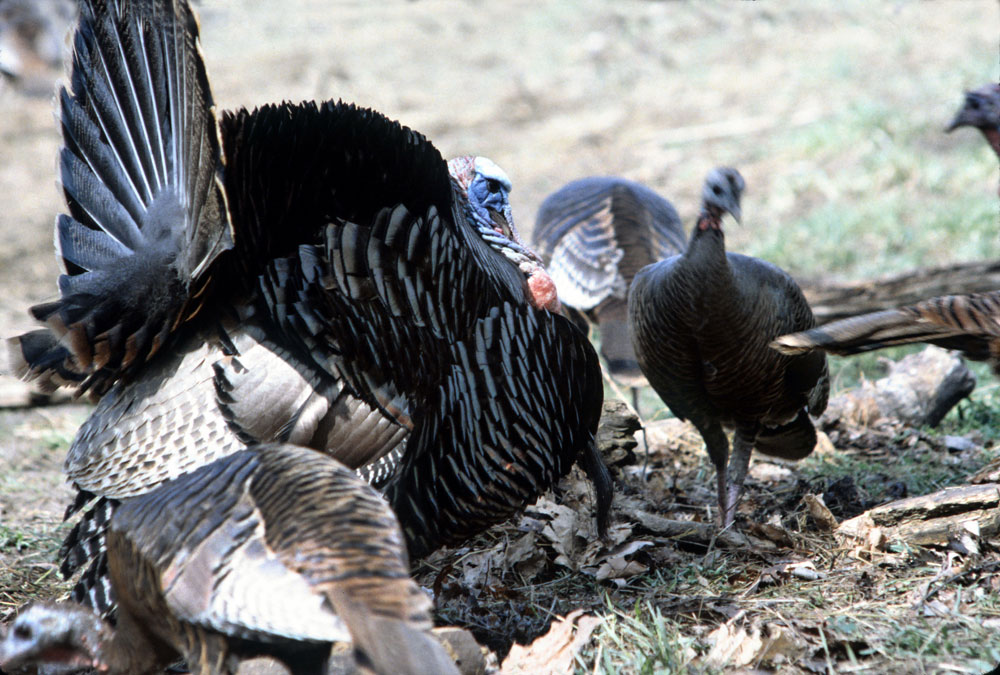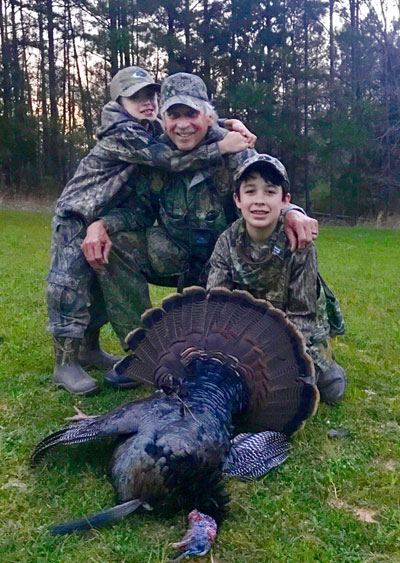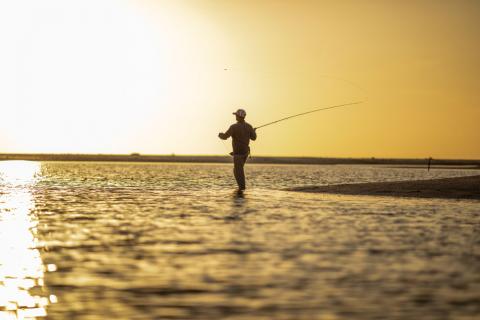provided by John Phillips
Mossy Oak Fishing Team Member Hank Parker is known by many as a tournament bass fisherman because that’s where he built his name and reputation in the early days of the Bassmaster tournament trail. Hank is a true outdoorsman and loves hunting just as much as he loves fishing. He’s an avid turkey hunter. Hank hunts turkeys in North Carolina and South Carolina.

When I’ve got a turkey coming and he gets held up by hens, I forget about that gobbler and start calling to the boss hen. There’s one hen in a flock of hens that determines where the flock goes, and what they do when they get there. If a gobbler that’s coming to you gets with a flock of hens, that boss hen also determines where that gobbler will go. He’ll want to stay with that flock of hens, until he breeds at least one of them, or until the hens start going to their nests.
 Boss hens are very territorial, and they don’t like a hen from another area that’s not a member of their flocks calling to those flock’s gobblers. So, more than likely, when she hears a hen calling aggressively to her gobbler, the first thing she wants to do is go to that hen and run her off. As she moves toward you (you’re sounding like a new hen in her territory), the rest of the hens and the gobbler will follow her. But, you don’t want to be too aggressive with your calling because she may just move the entire flock away from you. When I can hear or see the hens getting close to me, I stop calling because I don’t want those hens to know exactly where I am.
Boss hens are very territorial, and they don’t like a hen from another area that’s not a member of their flocks calling to those flock’s gobblers. So, more than likely, when she hears a hen calling aggressively to her gobbler, the first thing she wants to do is go to that hen and run her off. As she moves toward you (you’re sounding like a new hen in her territory), the rest of the hens and the gobbler will follow her. But, you don’t want to be too aggressive with your calling because she may just move the entire flock away from you. When I can hear or see the hens getting close to me, I stop calling because I don’t want those hens to know exactly where I am.
If the hens are mere yards away from me and the gobbler close by, I close one eye, and with the other eye, I look down at my knee. I don’t hold my head up because I’ve spooked more hens by breathing than any other way when they’re in close. If there’s any cool air when you breathe out, and a little condensation comes from your mouth, you can spook those hens. So, I quit breathing through my mouth and breathe only through my nose. Also, wearing a face mask will keep a turkey from seeing that little white cloud.
I’m hoping that I’ve got my gun pointed in the direction that the gobbler is coming from and can get my shotgun to my shoulder without him seeing me move. When I’m ready to take the shot, I’ll usually cluck or purr to get that gobbler to stick his head straight up. Then my pattern will hit all of his head and neck. I don’t want to shoot that turkey while his head is tucked down and strutting. I’d rather take him at 30 yards than at 15 yards. The big advantage of the TSS shot and tight chokes that most of us use on turkey shotguns is that you can take that bird at 60-65 yards. However, the bad part of this new shot is that if that turkey is at 20 yards, the pattern almost will be like you’re shooting a rifle. The pattern won’t have time to open up to give you a very dense pattern. Since I think a wild turkey gobbler is a beautiful bird, I don’t like to pulverize his head when he’s in really close. Instead, I like to take a turkey at 25-30 yards. That way, when I harvest my bird, he still looks good enough to take pictures.






























